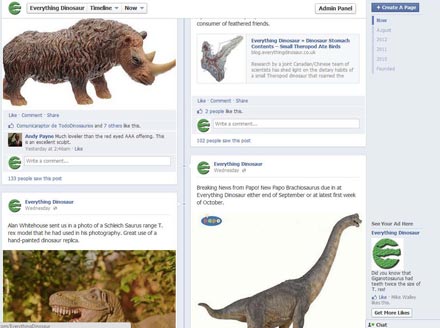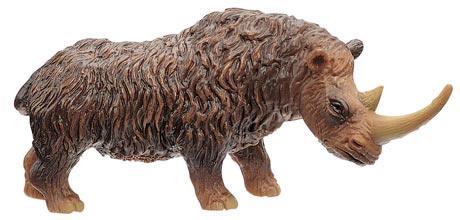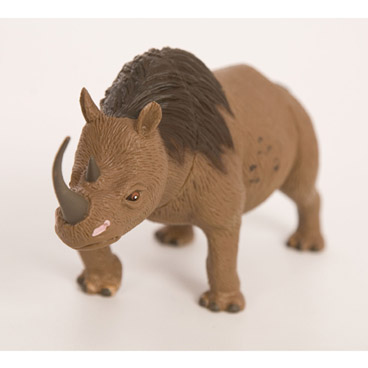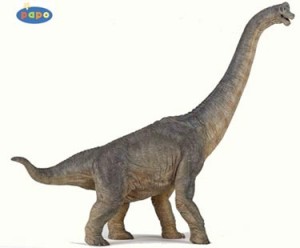Geological Survey of India Re-Discovers First Indian Dinosaur Fossil
In quieter moments when palaeontologists are given the chance to reflect on the current hot-spots for dinosaur discoveries thoughts may turn to the exciting fossil finds coming out of Angola, or the work being undertaken to research into the bizarre Dinosauria fauna that once roamed the prehistoric island of Hateg in southern Europe. Other scientists may comment on the amazing Early Cretaceous dinosaur discoveries that are being made around the town of Winton in Queensland (Australia), however, it is important that the fossil discoveries being made in India are not overlooked. Today, we look at India’s first dinosaur fossil to be scientifically described.
To read about the discovery of a dinosaur nesting site in India: “Treasure Trove” of Dinosaur Eggs found in India.
First Dinosaur Fossil
India is a huge country with extensive Mesozoic-aged formations that are just beginning to reveal evidence of the amazing creatures that roamed what was to become the Asian sub-continent. The history of dinosaur discovery in India actually goes back a very long way. The first recorded dinosaur find was made in that country more than one hundred and eighty years ago, even before the term Dinosauria was coined and the Dinosauria established as a suborder of the Reptilia. After one hundred and thirty four years the very first dinosaur fossil described from India has been re-discovered, ironically amongst the collection of the Geological Survey of India at their Kolkata head-office.
In the days of the British Empire, when India was regarded as the “jewel in the crown”, the country was being mapped and explored by her colonial masters. In 1828, Lieutenant-Colonel W. H. Sleeman of the Bengal Army (later knighted and to become a Major-General, after a long and distinguished career in India), led a small expedition to Jabalpur in Madhya Pradesh (central India). This military expedition with its accompanying geologists and cartographers mapped the strata in the area. This strata is now known as the Lameta Formation and it consists of Upper Cretaceous aged rocks (Maastrichtian faunal stage). The Lameta Formation is famous for its Late Cretaceous dinosaur fossils, most of them unique to this region. The fossils found include long-necked dinosaurs (Titanosauria) as well as many theropods including large abelisaurids that rivalled the tyrannosaurs in terms of size. It was this military expedition that found the first evidence of dinosaurs in India. W. H. Sleeman is credited with finding a twenty centimetre long, isolated bone from what was later to be termed a dinosaur.
Newly Re-Discovered World’s First Described Titanosaur Bone
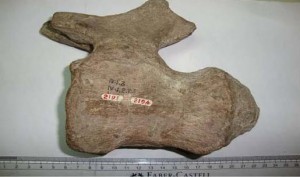
India’s lost and found titanosaur fossil.
Picture credit: Geological Survey of India
Discovered in 1828
The discovery, made in 1828 was only four years after the Reverend William Buckland had described the very first dinosaur (Megalosaurus bucklandii) and many years before the eminent English anatomist Sir Richard Own established the Dinosauria as the term used to describe these “terrible, fearfully great lizards”. Sir Richard Owen established the term Dinosauria – the dinosaurs in April 1842, although he later alluded to the fact that he had come up with the term earlier (August 1841).
The Indian specimen was actually a single, caudal vertebra (part of the tail), of a large, herbivorous dinosaur. It was passed amongst a number of distinguished Victorian scientists until 1877 when no record of where it was could be found. This dinosaur fossil, which had lain undiscovered for millions of years was lost to science from 1877 until April 2012 when it was discovered by members of the Geological Survey of India who were re-assessing the fossil heritage of the sub-continent. It was a chance discovery, the specimen having resided in the collection of the Geological Society of India at their Kolkata head-office.
India’s First Dinosaur Fossil
India’s first dinosaur fossil to be described was discovered by Dr D. M. Mohabey and Dr Subhasis Sen of the Geological Survey team. The dinner-plate sized specimen was amongst a collection of fossils that had been studied by the English naturalist and geologist Richard Lydekker, who had joined the organisation that was to become the Geological Survey of India back in 1874. It was Lydekker who formally named and described the specimen in 1877, establishing a new genus of dinosaur – Titanosaurus indicus. The newly, re-discovered tail bone is a holotype, a specimen upon which the original description of an organism is based. The specimen still has the original labels – 2193 and 2194 on it which are clearly visible, the classification given to this fossil by Lydekker. The fossil was located amongst the vertebrate fossils in the catalogued collection made by Lydekker and stored on the first floor at the headquarters of the Geological Survey of India.
Titanosaurs are a Cretaceous sub-branch of the long-necked dinosaurs known as sauropods. They lived mostly in the southern continents and survived up until the very end of the Cretaceous. Some titanosaurs did migrate into northern lands and a number of these herbivores evolved into huge animals, bigger than the diplodocids and brachiosaurids of the Late Jurassic. Titanosaurs such as Paralititan, Andesaurus, Bruhathkayosaurus, Alamosaurus and Argentinosaurus represent the largest land animals known to science.
An Illustration of a Typical Giant Titanosaur (Argentinosaurus)
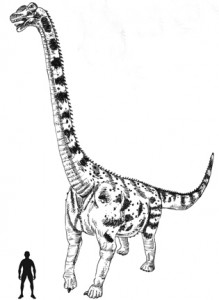
Huge dinosaurs – titanosaurids.
Picture credit: Everything Dinosaur
The Indian team are hoping to find more fossils that were presumed lost and to help to solve a puzzle which involves the Natural History Museum in London. A number of British expeditions explored the fossil beds of the Lameta Formation in the early part of the 20th century. Many specimens were subsequently removed from India to the then British Museum (now the Natural History Museum), in London. As part of a continuing international research programme to map India’s vertebrate fossils, scientists are hoping to be able to identify Indian dinosaurs amongst the collection at the Natural History Museum.
To view models and replicas of titanosaurs and other dinosaurs: Titanosaur Replicas and Dinosaur Models (CollectA).
The Geological Survey of India team are optimistic that any dinosaur specimens that they are able to trace to the Natural History Museum collection will be returned to India for further study and to be united with other Indian dinosaur specimens. Like the fossil found by Lieutenant-Colonel W. H. Sleeman, one hundred and eight four years ago, many of these fossils are holotypes and the only known fossil evidence for a number of dinosaur species that seem to be unique to the sub-continent.
The caudal vertebra, now back in the catalogued collection of the Indian survey team represents the very first titanosaur fossil to be scientifically studied and as such it is regarded as a critical specimen for the global research into the evolutionary history of these sauropod dinosaurs.
Perhaps more importantly, as the Indian economy strengthens and the country emerges as a global super-power there is a strong demand for improved educational resources and an emphasis on India’s place and role in the scientific community. It is likely that Indian museums will step up their efforts to have important artifacts such as dinosaur fossils returned to their country as interest in dinosaurs and other prehistoric animals grows.






